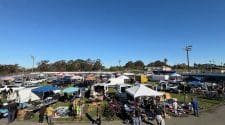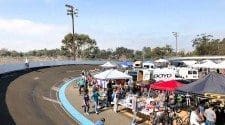Cycling is an invigorating way to enjoy the outdoors, stay fit, and experience the thrill of movement. In the United States, it’s estimated that more than 51 million people cycle regularly, making it a hobby the nation enjoys.
However, the experience can come with unique challenges and risks for those who are hard of hearing. Around 3.6% of the population suffers from hearing impairment, which means they’re deaf or have serious difficulty hearing, and it’s estimated that as many as 48 million people have some degree of hearing loss. That can lead to issues around bike safety; something cyclists need to be aware of.
This article explores the risks associated with cycling for individuals with hearing impairments and offers practical advice on how they can cycle safely and even compete in cycling events.
Risks for cyclists
The primary risk for hard-of-hearing cyclists is the inability to hear audio signals vital for safe riding. The sounds of approaching cars, horns, emergency vehicle sirens, and even the calls of other cyclists can be missed, leading to potentially dangerous situations. For example, without the ability to hear an oncoming car, a cyclist might misjudge the distance and speed of the vehicle, making lane changes or turns risky.
Environmental sounds like barking dogs or pedestrians calling out can signal unexpected obstacles or dangers. The lack of auditory feedback can also affect balance and spatial awareness, subtly increasing the risk of accidents.
Strategies for cyclists
Despite these challenges, there are numerous strategies and technological aids that can help hard-of-hearing individuals cycle safely and confidently. Developing enhanced visual awareness is one of the most effective strategies. Cyclists should practice regular visual scanning by frequently checking mirrors, looking over their shoulders, and being vigilant about their surroundings. Wearing bright and reflective clothing can significantly increase visibility, ensuring that motorists and other cyclists can easily see them, especially in low-light conditions. High-visibility vests, helmets with lights, and bike-mounted lights are essential gear.
Mastering hand signals is another crucial aspect. Clear and exaggerated hand signals can communicate intentions to other road users and fellow cyclists. Practicing these signals until they become instinctive can greatly enhance safety. It’s also helpful to ride defensively by anticipating potential hazards and being prepared to react promptly. Defensive riding techniques, such as maintaining a safe distance from vehicles, avoiding blind spots, and being extra cautious at intersections, can reduce the risk of accidents.
Audio technology
Technology plays a significant role in enabling safer cycling for those who are hard of hearing. Hearing devices specifically designed for cycling can make a significant difference. Modern hearing aids are equipped with features that filter out wind noise, enhance speech clarity, and improve environmental sound awareness. Cochlear implants, surgically implanted electronic devices, provide a sense of sound to individuals who are profoundly deaf or severely hard of hearing. These devices can be customized to enhance the cycling experience, allowing users to pick up important environmental sounds while filtering out unnecessary noise.
It is possible to buy eyeglasses with hearing features, which would also be an idea if you’re struggling with hearing and are one of the 167 million United States residents who wear glasses. These hearing aid glasses are suitable for casual riders going to and from work and are an all-in-one vision and hearing solution; they can even come fitted with transition lenses to switch between shaded and non-shaded effortlessly. They’re probably unsuitable for competitive cycling but are a strong option if you’re only in the saddle recreationally.
For those who prefer not to use traditional hearing aids while cycling, bone-conduction headphones are an excellent alternative. These headphones transmit sound through the bones of the skull, leaving the ears open to ambient sounds. They can be paired with GPS devices or smartphones to provide route guidance and communication without blocking environmental noises.
Cycling-specific communication systems are also available. These systems often include Bluetooth-enabled earpieces that allow riders to hear navigation prompts, communicate with other riders, and receive safety alerts without obstructing ambient sounds. This technology ensures that cyclists remain aware of their surroundings while staying connected with their group or race instructions.
Competitive cycling
Additional preparations are necessary for those interested in competitive cycling to ensure safety and performance. Familiarizing oneself with the race course before any event is crucial. Knowing the layout, turns, and potential hazards can reduce reliance on auditory cues. Participating in pre-race meetings and communicating with event organizers about specific needs or accommodations can also be beneficial. Using a buddy system during races can enhance safety. Having a hearing cyclist aware of the impairment and providing visual signals or tactile alerts ensures the hard-of-hearing cyclist stays informed about race dynamics and potential dangers.
Visual communication tools such as flags, lights, or electronic displays can help relay important information in competitive settings. Teams can develop a set of visual signals for critical instructions, ensuring seamless communication without relying on auditory cues. Technological assistance, such as GPS devices with visual and tactile feedback, advanced hearing devices, and cycling computers with large, easy-to-read displays, can provide vital information without requiring auditory processing.
Conclusion
In conclusion, cycling is an accessible and rewarding activity for individuals with hearing impairments, provided they adopt the right strategies and utilize available technologies. By enhancing visual awareness, using advanced hearing devices, and engaging in proper training and preparation, cyclists can navigate the roads safely and confidently.
No products found.

















